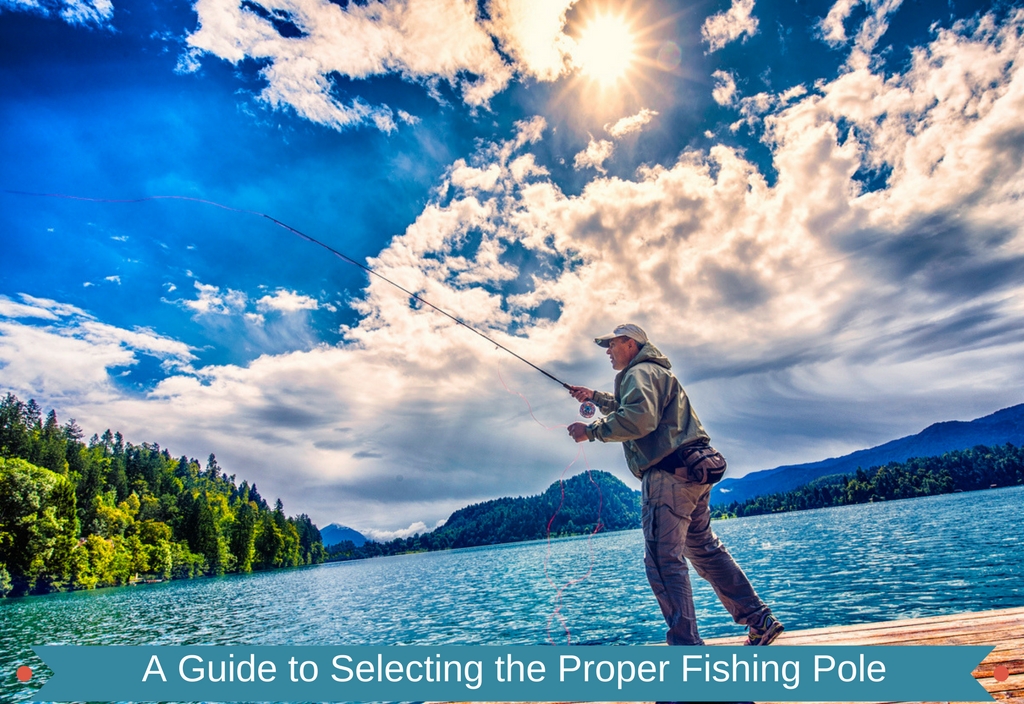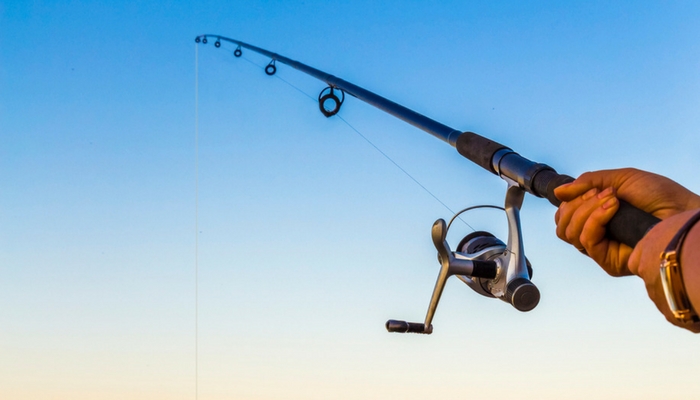 Selecting the proper fishing pole can help spell increased success on future fishing trips for any angler. The fishing pole is one of the most vital and essential pieces of equipment an angler will need to have at their disposal. Having the right equipment in any sport is imperative, so learning what to look for and doing some research before you buy are all good ideas as you set out on your mission of selecting the proper fishing pole.
Selecting the proper fishing pole can help spell increased success on future fishing trips for any angler. The fishing pole is one of the most vital and essential pieces of equipment an angler will need to have at their disposal. Having the right equipment in any sport is imperative, so learning what to look for and doing some research before you buy are all good ideas as you set out on your mission of selecting the proper fishing pole.
When you have the right fishing pole, you can cast baits more accurately, work the baits, detect the strikes, and set the hook to land more fish. You will want to consider the length, power, and action of the fishing rod when determining which is best.
Action
When we talk about action as it relates to choosing the right fishing pole, we are talking about how much of the rod deflects or bends when you begin to put any kind of pressure on the tip. If you are looking at a fast action rod, then you will see that the bend is only in the top third or so of the rod, while a slow action rod will begin to bend in the lower third of the rod.
If you are a bass angler, then a fast action rod may be the more suitable choice because a fast action rod will be able to provide you with better sensitivity, improved power, and speed. They are also ideal for short to long casting distances and single hooks.
Power
Power describes the lifting power or overall strength of the rod. When discussing power ratings, you will hear: heavy, medium heavy, and medium. A heavier line, for example, is good for heavier power ratings.
Another consideration to keep in mind when looking at the power of a fishing pole is the kind of water you will be using it in. If there are conditions that are thicker and have heavier cover, then you will want to find a pole that is strong enough to withstand those types of conditions.
On the other hand, if you prefer clear and open water to fish, then a lighter power rod will be sufficient enough. A lighter or ultra-light power rod are good for catching small bait fish and will bend easily without having to apply much pressure.
A heavier power rod is more suited for heavier fish that you would find if you were to go deep sea fishing, for example. Due to the heavier rod, the angler will have to apply much more pressure in order to get the pole to bend.
Length
The average fishing pole or rod will typically range in size from between six and twelve feet. And again, the length, like the power of the rod, depends on the type of fishing you plan on doing.
If you are a beginning angler, then a shorter rod is better because it will help you learn control and develop technique. However, you will not be able to get a long casting distance when you use a shorter rod.
A shorter rod is also useful in areas that are wooded or have a lot of surrounding brush or other elements that may get in the way. However, if you are fishing in a wide-open area and you are looking to catch the larger and more aggressive fish, then you will want to use a longer rod to achieve a longer casting distance.
Freshwater and Saltwater Fishing Rods
Fishing poles are made from an abundant amount of different materials including bamboo, graphite, fiberglass, or some kind of composite materials. When you are in the process of selecting the proper fishing pole, you will want to find one that falls in line with your personal skill level.
Fiberglass Rods
A fiberglass rod is typically matched well with a beginner because there really is no maintenance required and they are an average weight and length and are strong enough for beginning anglers. Fiberglass also works well if you are looking to reel in more aggressive fish.
Graphite Rods
Graphite rods are chosen by more professional anglers because they are a lot stronger than other rods and are still made to be light in weight. The lightweight design of these poles is ideal for anglers in a variety of different fishing scenarios, especially when they find they will need a little more power.
Styles of Freshwater and Saltwater Fishing Poles
After learning the basics of the materials used in the pole’s construction, you will then want to look at the three basic styles that are available:
Casting and Conventional Rods
Casting rods have the reel on the top and are best suited for anglers that will be casting several times throughout their trip. They also usually match up with baitcasting rods because of the design and they can handle heavier fishing line in denser covered areas.
Spinning Rods
This type of rod will range in length between five and eight feet, and the reel is positioned on the bottom of the pole, rather than the top like you would find in a casting or conventional rod.
Spinning rods are commonly used for trolling and still fishing when the angler is using live bait. They are also best when casting in saltwater and for salmon fishing. No triggers are used on a spinning rod, and they are designed to hold a spincasting reel that can usually be mounted right above the handle of the pole.
Final Thoughts
There is always some confusion about the differences between what is considered a fishing pole and a fishing rod. This is important to know when you start looking as well because many people are unsure.
Generally speaking, a fishing pole is made from more natural materials like bamboo or wood, while a fishing rod is made more from fiberglass or other composite materials. However, they both accomplish the same thing.
Also, no matter what materials you talk about when discussing fishing poles or fishing rods, they are still all known as a blank. The blank is a pole that forms the core of the rod, and this article discussed how to select the right and appropriate rod blank while considering the power, action, and length.


